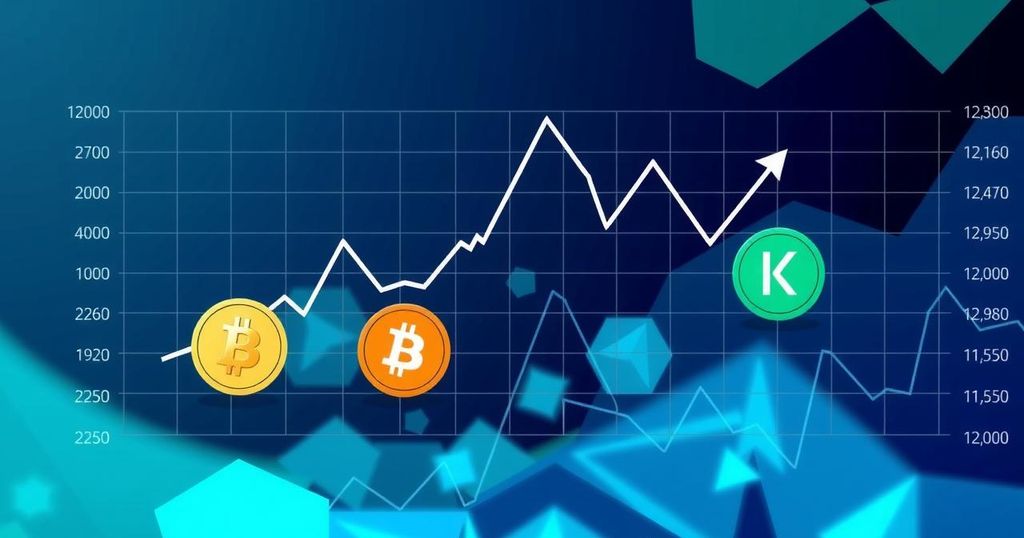Market Insights: A Close Look at Polygon, Pepe, and Kaspa Crypto Trends
The analysis of crypto assets Polygon (POL), Pepe (PEPE), and Kaspa (KAS) highlights their unique performance trends and challenges. Polygon struggles with poor tokenomics and disappointed expectations; Pepe has shown explosive gains and subsequent declines typical of memecoins; while Kaspa, despite being in a bear market since its debut, shows steady growth and resilience, albeit with speculative tendencies.
In the ever-evolving world of cryptocurrencies, Bitcoin continues to reign, and yet, altcoins are making some waves. This article looks into the recent performance of three cryptos: Polygon (POL), Pepe (PEPE), and Kaspa (KAS). Each has its own story, revealing unique trends and market behaviours.
Polygon, or POL, is the native token for Ethereum’s layer-2 solution. The project started gaining traction back in 2020 when it was under the name MATIC. In the crypto boom of 2021, MATIC skyrocketed from less than $0.02 to over $2 within just several months. But reality struck hard in early 2022 when the Terra/Luna fiasco contributed to a price drop to around $0.4. Thankfully, that still kept it above the original levels.
Fast forward to 2023, MATIC enjoyed a modest recovery. However, the relaunch as POL at $0.6 didn’t quite promise lasting stability, as it soon entered a bear phase, hitting $0.3, and even dipping under $0.2 in April 2025. The tokenomics of POL aren’t particularly supportive either. With no cap on token issuance, new tokens hitting the market contribute to selling pressure, which isn’t great for maintaining price levels.
PEPE presents a different narrative. This memecoin, also built on Ethereum, launched in 2023, post the bear market of 2022. PEPE started at 0.000001 dollars, ballooning to an astonishing peak of 0.000028 dollars in late 2024 – a whopping 3,000% jump. But this was, of course, a speculative bubble that burst quickly after mid-December that year.
Currently, PEPE has not returned to its early 2024 levels, settling instead just above its April 2024 price point. That’s a notable cancellation of the second-half gains, while retaining early-year growth. Memecoins generally crash back to their initial launch price, which makes PEPE’s current standing a slight anomaly. Still, it remains a purely speculative asset, so future price surges could happen, but nothing’s guaranteed.
Now onto Kaspa, or KAS. It’s a level one blockchain using a Proof-of-Work model, which debuted amidst a bear market back in 2022. Initially priced around $0.00018, the coin rocketed to over $0.00030 the next year. This suggests the starting price was remarkably undervalued. From August 2022 to March 2023, KAS surged by a staggering 1,000%.
In December 2024, KAS reached a peak of $0.000188 but never hit the highs after Trump’s electoral win, which is interesting. Instead, it actually saw its all-time high of $0.000207 in August of that year. Despite significant fluctuations, even after the bubble burst, KAS managed to keep prices above early 2023 highs.
Overall, the KAS price movements paint a more steady picture compared to the speculative bubbles around PEPE. It had a considerable rise between 30 and 207 thousandths, and even after a plunge to 90 thousandths, it still doesn’t look like the typical tumultuous trend of memecoins. Recently, there’s been a rebound, indicating that a bottom might have been drawn in April, marking the end of its downward phase into 2025.
In summary, the landscapes for POL, PEPE, and KAS are shaped by unique influences, revealing just how complex and unpredictable the crypto market can be.




Post Comment